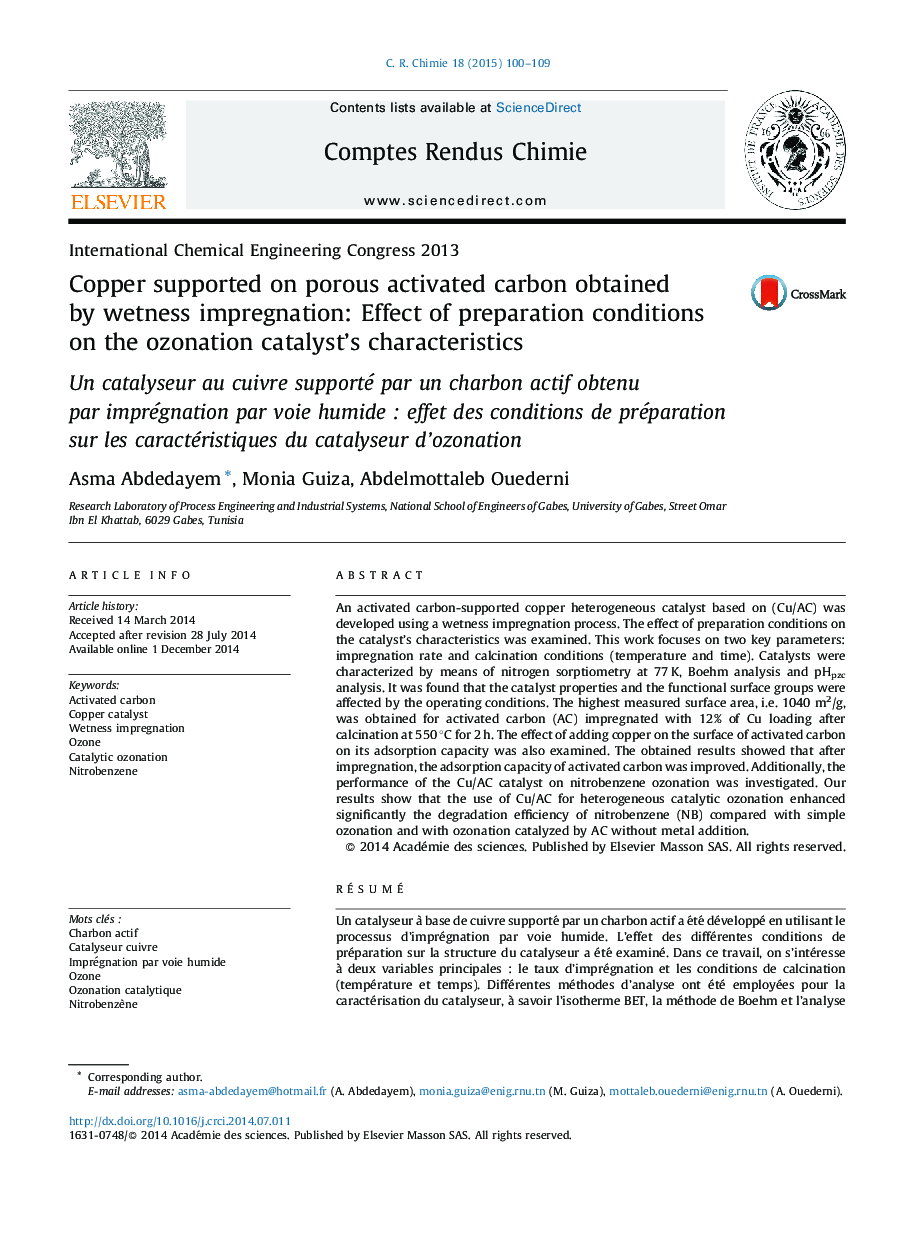| کد مقاله | کد نشریه | سال انتشار | مقاله انگلیسی | نسخه تمام متن |
|---|---|---|---|---|
| 170448 | 458394 | 2015 | 10 صفحه PDF | دانلود رایگان |
An activated carbon-supported copper heterogeneous catalyst based on (Cu/AC) was developed using a wetness impregnation process. The effect of preparation conditions on the catalyst's characteristics was examined. This work focuses on two key parameters: impregnation rate and calcination conditions (temperature and time). Catalysts were characterized by means of nitrogen sorptiometry at 77 K, Boehm analysis and pHpzc analysis. It was found that the catalyst properties and the functional surface groups were affected by the operating conditions. The highest measured surface area, i.e. 1040 m2/g, was obtained for activated carbon (AC) impregnated with 12% of Cu loading after calcination at 550 °C for 2 h. The effect of adding copper on the surface of activated carbon on its adsorption capacity was also examined. The obtained results showed that after impregnation, the adsorption capacity of activated carbon was improved. Additionally, the performance of the Cu/AC catalyst on nitrobenzene ozonation was investigated. Our results show that the use of Cu/AC for heterogeneous catalytic ozonation enhanced significantly the degradation efficiency of nitrobenzene (NB) compared with simple ozonation and with ozonation catalyzed by AC without metal addition.
RésuméUn catalyseur à base de cuivre supporté par un charbon actif a été développé en utilisant le processus d’imprégnation par voie humide. L’effet des différentes conditions de préparation sur la structure du catalyseur a été examiné. Dans ce travail, on s’intéresse à deux variables principales : le taux d’imprégnation et les conditions de calcination (température et temps). Différentes méthodes d’analyse ont été employées pour la caractérisation du catalyseur, à savoir l’isotherme BET, la méthode de Boehm et l’analyse du pHpzc. Un optimum de la surface a été obtenu pour 12 % du cuivre supporté sur le charbon calciné à 550 °C pendant 2 h. L’effet du catalyseur sur la capacité d’adsorption du charbon actif a été examiné. Les résultats montrent que le greffage du cuivre à la surface du charbon actif a amélioré sa capacité d’adsorption vis-à-vis du nitrobenzène. Ce catalyseur a été par la suite testé pour l’ozonation du nitrobenzène. Les résultats montrent que la présence du catalyseur améliore considérablement la dégradation du nitrobenzène en comparaison de l’ozonation seule et de l’ozonation catalysée par le charbon actif.
Journal: Comptes Rendus Chimie - Volume 18, Issue 1, January 2015, Pages 100–109
